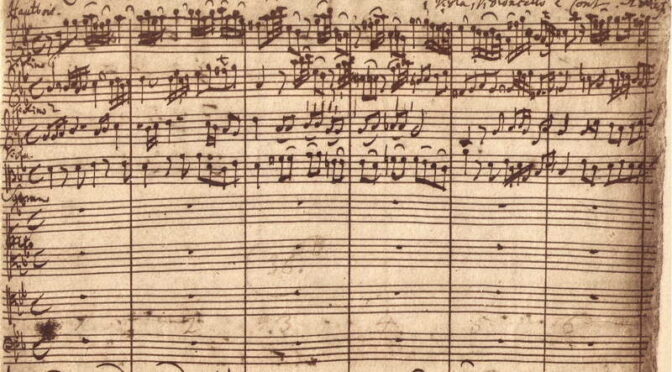During this sheltered in place time, I felt I needed a project. So together with a friend who also loves the music of J. S. Bach, we decided to try to listen to all of his sacred cantatas, allowing two days for each one. We write down our observations and exchange results. This is a somewhat daunting task in that Bach wrote some 300 cantatas. Of the 300, about 75 were lost, and 25 of the rest are secular. The sacred cantatas were composed for most all the Sundays of the three-year liturgical cycle as well as festival days (Christmas, Ascension Day, etc.) No cantatas were needed during Lent or Advent 2, 3, 4.
We began with BWV 1, and we’re now at BWV 36. A typical cantata is about 20 -30 minutes in length, intended to support the scriptural lessons of the day. The cantata was sung just before the sermon, or split in two parts surrounding the sermon.
The typical musical forces include a small orchestra consisting of 2 violins, viola, 1-3 oboes, 1-2 flutes (transverse or recorder), cello (or viola de gamba), violone (double bass), and organ for the basso continuo. All of the finest performance groups today use Baroque instruments. The vocal forces include a small size SATB choir and one or more vocal soloists. For more festive occasions, Bach would add 1-3 high register trumpets, and timpani. Some cantatas might also make use of the horn (without valves).
Many of the cantatas are structured with these components:
- Sinfonia (purely orchestral introduction) or Chorus (choir with orchestra)
- Recitative: describing the essence of a lesson
- Aria: vocal solo (or duet) reflecting on that lesson (two types: slow (caantible) or quick (vravura)
- Recitative
- Aria
- Chorale (one of the large body of German Lutheran hymnody, harmonized by Bach and with orchestra or Chorus (with orchestra, and which may or may not include a chorale melody)
What makes the cantata exploration especially interesting is that there always seems to be a surprise element, often related to the “text painting” of the libretto (text, supplied by one of several of Bach’s librettists). Classic examples of this would be music that suggests joy, sorrow, contentment, anger, longing etc.), which could involve unusual orchestration, unexpected interruptions by the chorus in an aria or recitative.
Each cantata might be regarded as a mini sacred drama
How do we go about exploring a cantata? We listen to the cantata (fine free performances are available online) we read commentary (Wikipedia is one source for basic information), then perhaps listen again, but to a different performance, and finally write down our observations and send off to our colleague.
BTW: Good performances may be heard by the following:
Gardiner, Suzuki, Van Veldhoven, Lutz, and Harnoncourt (at times you may have to click off an ad to resume the performance).
You may find a Bach cantata exploration as a gratifying adventure. I certainly have found it so. Some of the least known Bach works are the cantatas; they are filled with musical gems.
David P. Dahl



